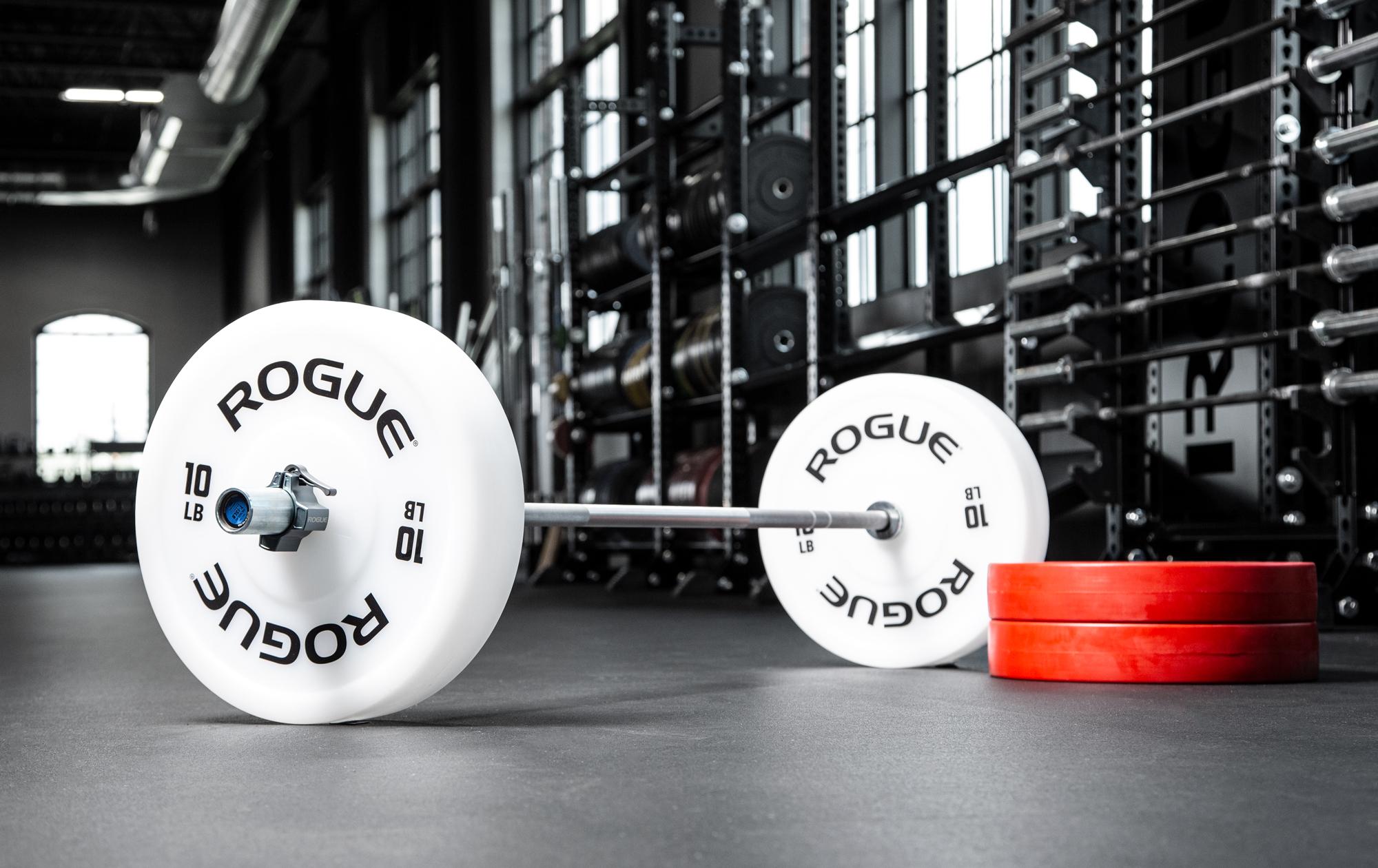Rogue Competition plates vs Rogue Technique plates
This is a comparison between the Rogue Competition plate and the Technique plate including pros, cons and alternatives. Follow the links for more details
Overview and review of the Rogue Technique plates
The Rogue technique plates will set you back about $125 - $160 dollars. These plates are especially good to use for beginning weightlifters. This overview has originally been published in the article "Which rogue plates to buy" which you can find on this blog.
What else to consider from Rogue
- Which belt to buy from Rogue
- Which barbell to buy from rogue
- Which rack to buy from Rogue over $1000
- Which rack to buy from Rogue for under $1000
- Which plates to buy from Rogue
- Which strength equipment to buy from Rogue
- Which conditioning equipment to buy from Rogue
- Which Equipment package to buy from Rogue
- Which accessory to get from Rogue
- Which jump rope to get from Rogue
- Which knee sleeve to get from Rogue
Overview of the technique plates
Technique plates are special plates which have the same diameter of 450mm than regular competition plates but at a much lower weight. This is achieved by using high-density polyethylene Plastic (HDPE). These are the right plates to teach beginners, juniors or getting rehabbing athletes back to lifting. These plates combined with a technique bar can lower the weight of the bar for a beginner to 15kg to enter the sport of Olympic weightlifting. If you work a lot with children or very unfit beginners, this is a good plate to add to your arsenal.
The technique plates are available in red and white in 2.5kg, 5kg, 5lb, and 10lb versions. They have the following specs:
- 450mm Diameter
- 50.2mm Center Hole Diameter
- Grooved edge for easier handling
Pros of the technique plates
Technique plates help to ease into the sport and to hone your lifts to perfection. If your gym or yourself are serious about Olympic weightlifting they will be a great addition to your arsenal to grind on technique without wreaking your body.
Cons of the technique plates
These plates have a very narrow and specialized use case. If you do not enter the realm of Olympic weightlifting you will probably only get very little use out of them.
Alternatives to the technique plates
Alternatives to technique plates are:
Fractional plates and change plates help you to work with lower denominations in work and to microload . In most cases you will get more use out of these for everyday training than out of technique plates.
Overview and review of the Rogue Competition plates
The Rogue competition plates will set you back about $1035 dollars or $7.39 dollars per kg. These plates are especially good to use for competing weightlifters. This overview has originally been published in the article "Which rogue plates to buy" which you can find on this blog.
Overview of the competition plates
These are the best that Rogue has to offer. Repeatedly used on Olympic lifting competitions and the CrossFit games these are the plates to behold when it gets to competition day. The plates have been updated with better design, lettering, and raised rubber to make them last kong and look good. They have minimal bounce and provide everything you need to post new personal records for your Olympic lifts.
Weight / Color / Diameter / Thickness / Price per pair
25kg / Red / 450mm / 2.5'' / $309.75
20kg / Blue / 450mm / 2.15'' / $252.50
15kg / Yellow / 450mm / 1.65'' / $208
10kg / Green / 450mm / 1.15'' / $152.50
Available sets
90kg, 2x 10-15-20kg $685
110kg, 2x 10-20-25kg $835
120kg, 2x 15-20-25kg $900
140kg, 2x 10-15-20-25kg $1035
Pros of the competition plates
These are the best plates you can get for Olympic lifting from Rogue. There is not really much more to say about them in terms of pros.
Cons of the competition plates
High quality has a high price. If you want to save money on plates you might want to go with bumper plates instead.
Alternatives to the competition plates
Bumper plates are the ultimate workhorse piece of equipment you can get from Rogue. They come in at less than half the price per kilo than the competition plates. With the saved money you might want to buy extra barbells or kettlebells depending on your needs. The disadvantages are that bumper plates are not color coded and also do not fit as much weight on the bar than competition plates.
Calibrated steel plates are the go-to for powerlifters who want precision and maximize the weight on the bar. These plates are color-coded and precision manufactured. With the seal of approval from the IPF, you can begin your journey to the podium of your next powerlifting meet.
Black training plates are a great combination of practical training plates and high standard competition quality. The design of these plates makes them a good fit for everyday use while still keeping the mindset of a champion.


